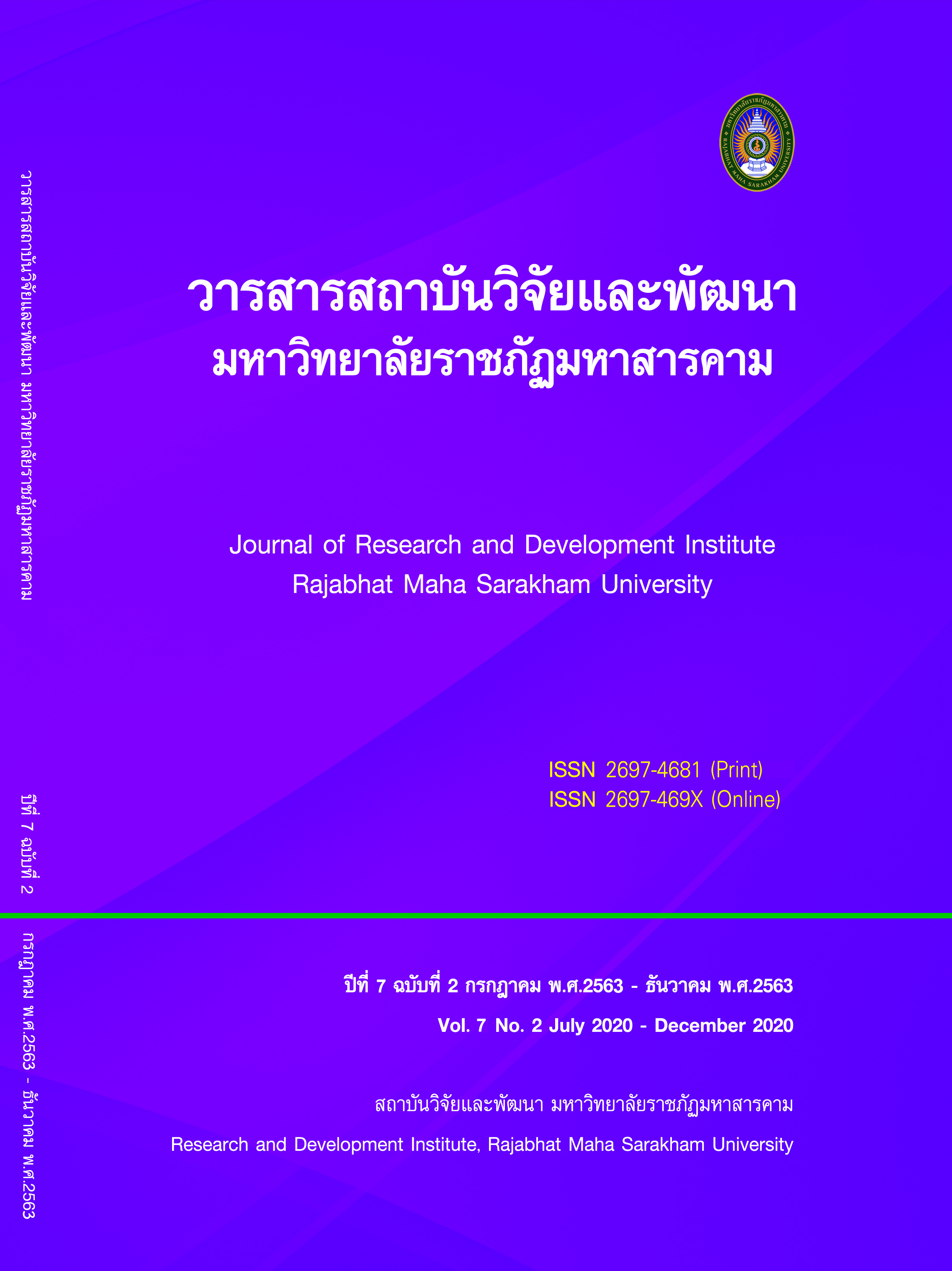Tourist Behaviors and Tourism Management Guidelines for Khmer Civilization Tourist Attractions in Lop Buri province
Keywords:
Tourist Behavior, Tourism Management, Khmer Civilization Tourist Attraction in Lop BuriAbstract
This research aims to study tourist behavior and trends in tourism management element for Khmer Civilization tourist attractions in Lop Buri province using research questionnaire with random sampling technique (300 samples). The research is conducted during October, 2018 to September 2019 using qualitative analysis (frequency, percentile, mean), and quantitative analysis (content analysis). The result indicates that most of tourists are located in Bangkok and the province in the center of Thailand. The attractiveness of tourist attraction is the primary motivation to travel in particular tourist destination while friend and family are the major references of tourist information. Private care is main transportation with approximate 1,000–3,000 Baht The results of tourism management assessment indicate that the tourist satisfactions are in the medium rank; Phra Prang Sam Yot (x̄ = 3.32), Phra Kal Shrine (x̄ = 3.23), Prang Khaek (x̄ = 3.14). In this research, there are 5 dimensions of tourism management guideline as 1) landscape and infrastructure development, 2) create value added using story telling, 3) develop information flow of tourism supply chain, 4) develop necessary skills and expertise of tourism staff, 5) promote proactive marketing strategies to attract new and quality tourist also encourage the revisit intension of tourist.
References
References
Department of Tourism. (2018). Tourism Development Strategic Plan 2018 – 2021. Bangkok : VIP Copy Print.
Document Processing and Archives Committee. (1999). Culture, historical development, identity and wisdom of Lopburi Province. Bangkok : Fine Arts Department, Ministry of Education.
Jaturong Phokaratasiri. (2013). Summary of Creative Economy and Cultural Heritage Projects for Sustainable Tourism Phase 2. Bangkok : Faculty of Architecture and Urban Planning, Thammasat University.
Ministry of Tourism and Sports. (2019). Statistics of domestic tourists in 2018. [Online] www.mots.go.th/more_news.php?cid=497&filename=index. [1 July 2019]
Nuttavuthisit, K. (2011). Consumption and marketing: the Asian perspectives and practices. Bangkok : Chulalongkorn University.
Papatchon Jariyapan. (2019). Value Chain Analysis for the Development of a Smart Tourism Destination in Eastern Economic Corridor. Bangkok : Office of the National Research Council of Thailand and the Office of the Research Fund.
Rungroj Thamrungraeng. (2005). Khmer castle in Thai territory : background and information on art history. 1st edition, Bangkok: Matichon.
Sayamol Theptha. (2016). Management of Creative Tourism for Cultural Heritage in Tourism Destinations of Lop Buri Watershed. Academic Journal, Buriram Rajabhat University (Humanities and Social Sciences), 8 (Special issue), 499-510.
Song, H. (2012). Tourism Supply Chain Management. New York : Routledge.
Suddan Wisudthiluck. (2015). Creative Tourism Knowledge: Handbooks and Practices. Bangkok : Special Area Development Administration for Sustainable Tourism (Public Organization).
Wuttigrai Ngamsirijit et al. (2014). The Development of Supply Network for Creative Tourism in Bangkok Metropolitan Area. Bangkok : Research Fund Office.
Downloads
Published
How to Cite
Issue
Section
License
Articles that are published are copyrighted by the authors of the articles







